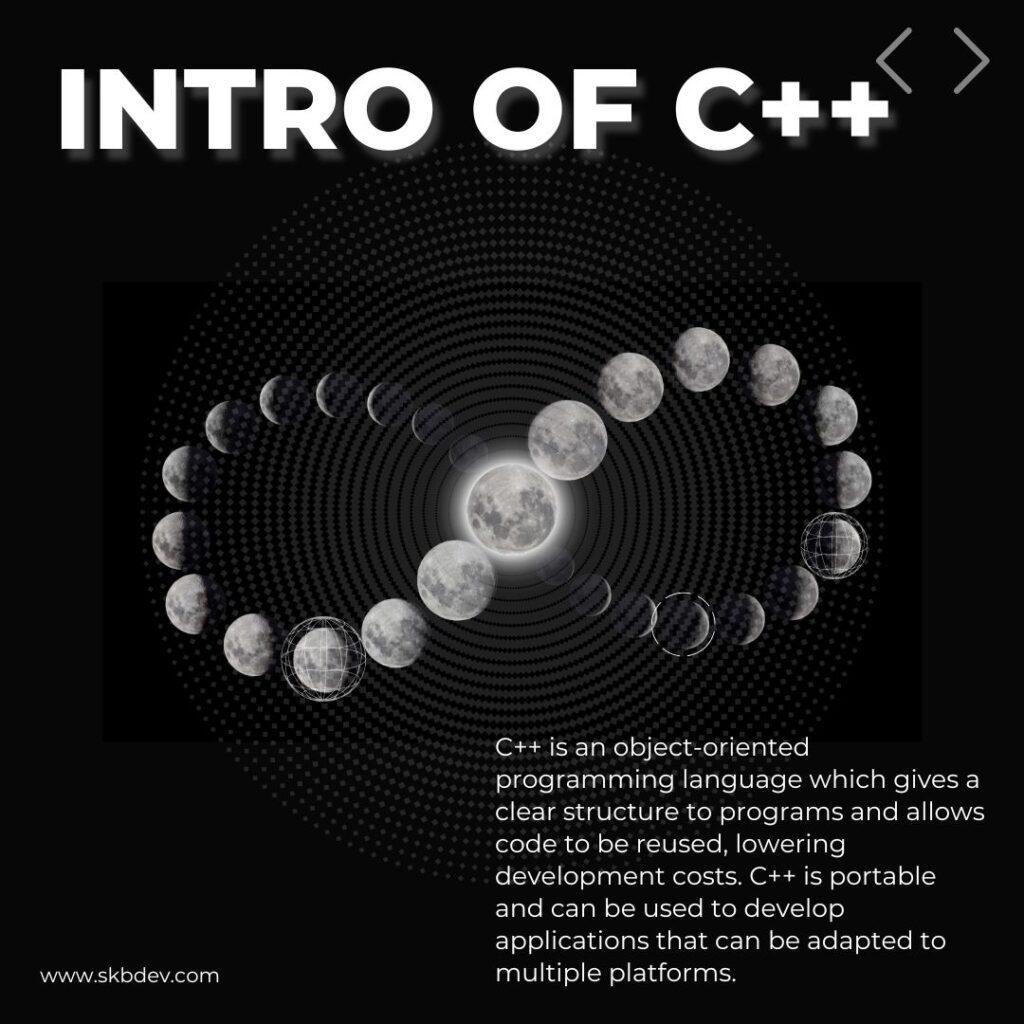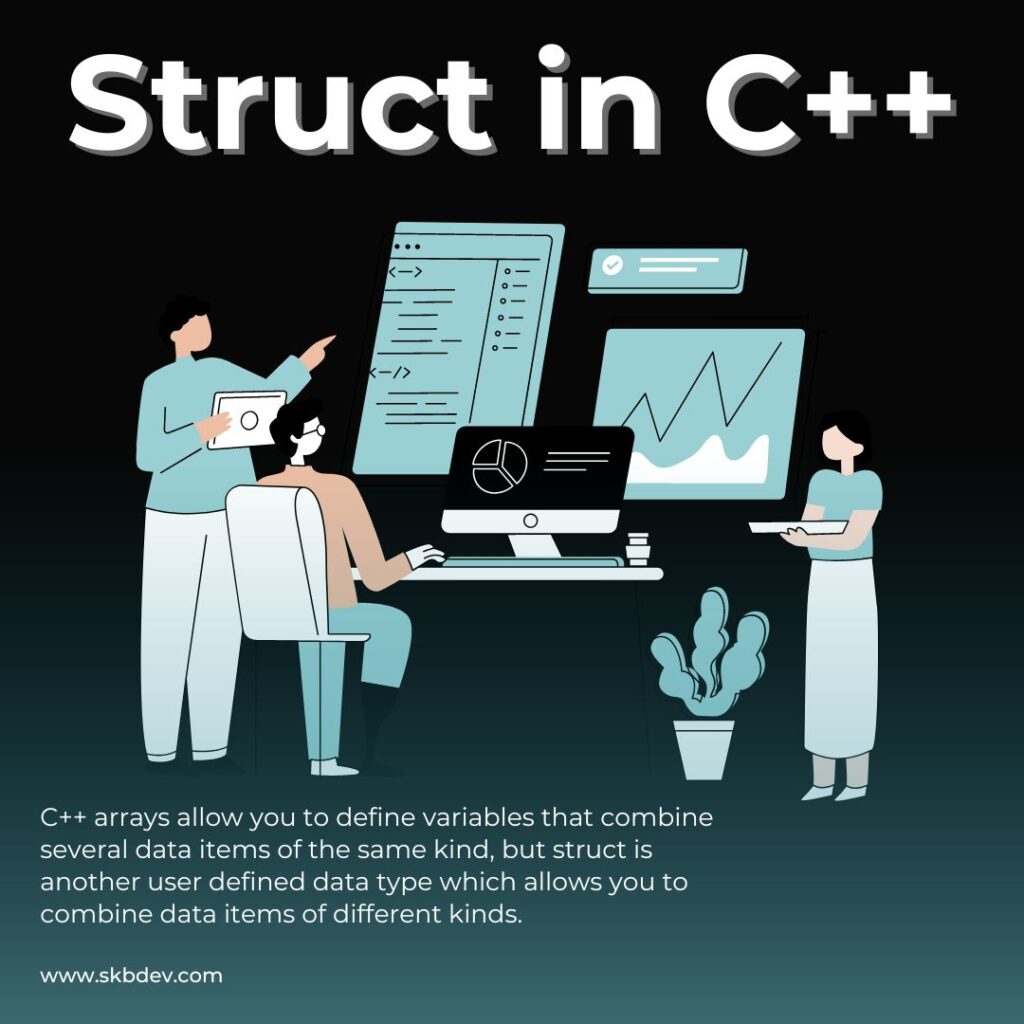A stack is a linear data structure in which the insertion of a new element and removal of an existing element takes place at the same end represented as the top of the stack data structure.
To implement the stack, it is required to maintain the pointer to the top of the stack, which is the last element to be inserted because we can access the elements only on the top of the stack.
LIFO(Last in First Out)
This strategy states that the element that is inserted last will come out first. You can take a pile of plates kept on top of each other as a real-life example. The plate which we put last is on the top and since we remove the plate that is at the top, we can say that the plate that was put last comes out first.

Stack Data Structure using Array
A program that implements a stack using array is given as follows.
#include <iostream>
using namespace std;
int stack[100], n=100, top=-1;
void push(int val) {
if(top>=n-1)
cout<<"Stack Overflow"<<endl;
else {
top++;
stack[top]=val;
}
}
void pop() {
if(top<=-1)
cout<<"Stack Underflow"<<endl;
else {
cout<<"The popped element is "<< stack[top] <<endl;
top--;
}
}
void display() {
if(top>=0) {
cout<<"Stack elements are:";
for(int i=top; i>=0; i--)
cout<<stack[i]<<" ";
cout<<endl;
} else
cout<<"Stack is empty";
}
int main() {
int ch, val;
cout<<"1) Push in stack"<<endl;
cout<<"2) Pop from stack"<<endl;
cout<<"3) Display stack"<<endl;
cout<<"4) Exit"<<endl;
do {
cout<<"Enter choice: "<<endl;
cin>>ch;
switch(ch) {
case 1: {
cout<<"Enter value to be pushed:"<<endl;
cin>>val;
push(val);
break;
}
case 2: {
pop();
break;
}
case 3: {
display();
break;
}
case 4: {
cout<<"Exit"<<endl;
break;
}
default: {
cout<<"Invalid Choice"<<endl;
}
}
}while(ch!=4);
return 0;
}Output
1) Push in stack
2) Pop from stack
3) Display stack
4) Exit
Enter choice: 1
Enter value to be pushed: 2
Enter choice: 1
Enter value to be pushed: 6
Enter choice: 1
Enter value to be pushed: 8
Enter choice: 1
Enter value to be pushed: 7
Enter choice: 2
The popped element is 7
Enter choice: 3
Stack elements are:8 6 2
Enter choice: 5
Invalid Choice
Enter choice: 4
ExitIn the above program, the push() function takes argument val i.e., value to be pushed into the stack. If a top is greater than or equal to n, there is no space in a stack and overflow is printed. Otherwise, val is pushed into the stack.
void push(int val) {
if(top>=n-1)
cout<<"Stack Overflow"<<endl;
else {
top++;
stack[top]=val;
}
}The pop() function pops the topmost value of the stack, if there is any value. If the stack is empty then underflow is printed.
void pop() {
if(top<=-1)
cout<<"Stack Underflow"<<endl;
else {
cout<<"The popped element is "<< stack[top] <<endl;
top--;
}
}The display() function displays all the elements in the stack. It uses a for loop to do so. If there are no elements in the stack, then Stack is empty is printed.
void display() {
if(top>=0) {
cout<<"Stack elements are:";
for(int i=top; i>=0; i--)
cout<<stack[i]<<" ";
cout<<endl;
}else
cout<<"Stack is empty";
}The function main() provides a choice to the user if they want to push, pop or display the stack. According to the user response, the appropriate function is called using switch. If the user enters an invalid response, then that is printed.
int main() {
int ch, val;
cout<<"1) Push in stack"<<endl;
cout<<"2) Pop from stack"<<endl;
cout<<"3) Display stack"<<endl;
cout<<"4) Exit"<<endl;
do {
cout<<"Enter choice: "<<endl;
cin>>ch;
switch(ch) {
case 1: {
cout<<"Enter value to be pushed:"<<endl;
cin>>val;
push(val);
break;
}
case 2: {
pop();
break;
}
case 3: {
display();
break;
}
case 4: {
cout<<"Exit"<<endl;
break;
}
default: {
cout<<"Invalid Choice"<<endl;
}
}
}while(ch!=4);
return 0;
}I hope you liked my article and understood the Stack data structure properly. For more know contact us. And also check Salman Travo Blog for travel blogs. or Check out Queue Data Structure using Array.








Pingback: Text Selection Color Changing - SKB Development